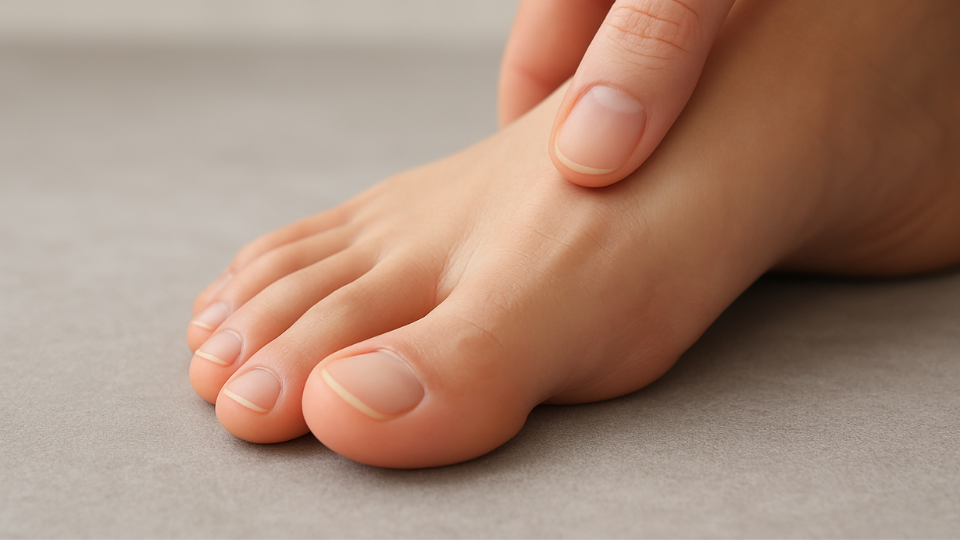
Ankle sprains often heal on their own, but only if you’re mindful of your actions and give your joint time to recover. Learn what causes an ankle sprain and how to safely stay active while your sprain heals.
An ankle sprain is a common injury, especially among athletes at all levels who find it difficult to slow down, even when they hurt.
If you’re managing a sprain, our sports injury specialists at Foot and Ankle Specialists in The Woodlands, Huntsville, and Memorial City, Texas, want to remind you to focus on your recovery. Doing too much too soon can potentially cause more damage, keeping you out of the game even longer.
Below, our podiatry team provides guidance to help your ankle heal and prevent additional tissue damage.
How ankle sprains happen
An ankle sprain occurs when your foot and ankle suddenly roll or twist inward. The movement causes the ligaments in your ankle joint to stretch beyond their usual range of motion, leading to inflammation and small tears in the tissue.
Sports and strenuous exercise are common causes of ankle sprains. However, you can also develop a sprain by stepping awkwardly off a curb, stepping in a hole, or tripping over an object.
Symptoms of an ankle sprain include:
- Swelling
- Bruising
- Tenderness
- Ankle instability
Walking or bearing weight on your ankle may be difficult. You may also notice your ankle joint feels stiff or painful when you stand or walk.
5 strategies to heal an ankle sprain
Being limited by an ankle sprain can be frustrating, especially when you want to keep up with your exercise regimen or participate in team practices. However, it’s important that you make necessary changes to your routine to minimize your risk of additional damage to your ankle joint.
Here are strategies you can use to help your ankle joint heal:
1. Prioritize rest
In the initial days following an ankle sprain, it’s vital that you rest as much as possible to keep the weight off your ankle.
Our team recommends you elevate your ankle with a cushion to reduce swelling. You can also use crutches to get around for a few days so your ankle has time to heal.
2. Use ice
To reduce swelling and pain, place an ice pack on your ankle joint for up to 20 minutes several times a day.
Protect your skin from the intense cold by wrapping the ice pack in a towel. If a pack is too large or difficult to maneuver, use a bag of frozen vegetables that you can easily wrap around your ankle joint.
3. Try a compression wrap
Wrapping a compression bandage around your ankle can improve joint stability when you’re ready to be active again.
You can also talk with our podiatry team about custom orthotics that provide additional ankle support.
4. Start small
When swelling and pain subside, you can start engaging in light exercises that target your ankle. For instance, you can use your ankle to make circles or gently pump your heel on the floor.
You can also keep up with the upper body workouts you can do from a seated position until your ankle heals.
If you feel any ankle pain, stop what you’re doing and rest. Try stretching again the following day if your ankle feels okay. Gradually work your way back to the usual exercises while paying attention to how your body responds.
5. Don’t ignore pain
If your ankle joint doesn’t seem to be healing or your pain is getting worse, speak with our physicians about your options for treatment.
We offer personalized treatment plans to help your ankle joint heal fully. Our team also offers resources you can use to protect against additional ankle sprains.
Call the Foot & Ankle Specialists office near you today to schedule a diagnostic evaluation for an ankle sprain, or Request an appointment anytime.
Read Our Latest Blog

Stress Fracture in the Foot: Symptoms, Swelling, and When You Can (or Can’t) Walk
Learn the symptoms, swelling signs, and walking guidelines for stress fractures in the foot. Protect your recovery with expert podiatric care at FAS The Woodlands.



